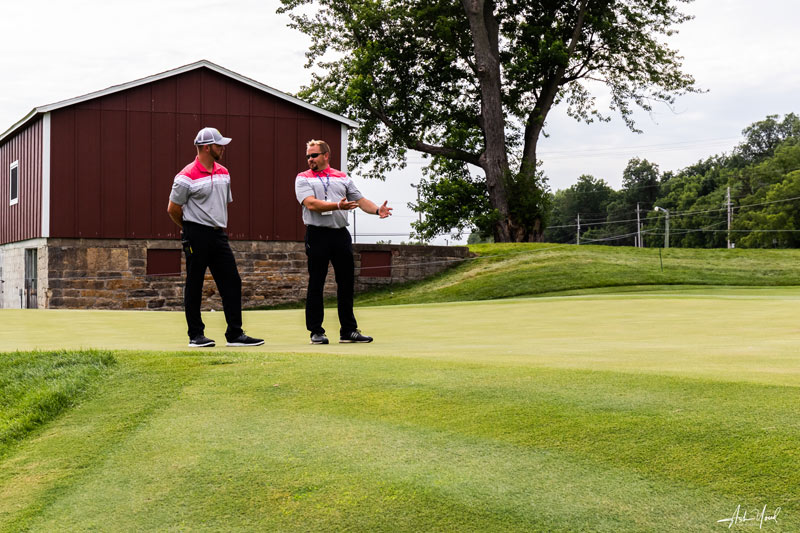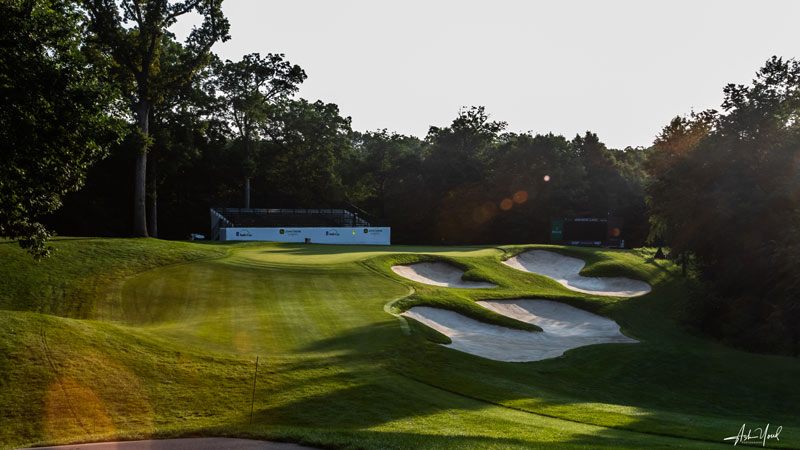
Alex Stuedemann, CGCS, (right) oversees TPC Deere Run in Silvis, Ill., located in the Quad Cities region in northwestern Illinois. The public course was built in 2000. Photos courtesy of BASF
Editor’s note: The following article was supplied by BASF. All product claims, research cited and other information is directly from the company.
The TPC Deere Run golf course is located in Silvis, Ill., on 400 acres nestled beside the Rock River. The land itself is steeped in history, from its time as a Native American settlement to its more recent incarnation as a storied horse and cattle breeding farm. When descendants of the John Deere family donated the land to serve as the annual host of the John Deere Classic, golf course designer D.A. Weibring changed very little about the geography in order to maintain its unique aesthetic qualities.
While the natural allure of Deere Run presents a one-of-a-kind experience for PGA Tour players and guests, it also presents equally unique challenges for those who maintain the health, beauty and playability of the 18-hole golf course. That charge is led by Alex Stuedemann, CGCS, director of golf course maintenance operations.
“It’s a hilly, treed site with a lot of challenging growing environments for turf,” says Stuedemann, noting the property’s slow-draining soil that has a lot of rock beneath it. Temperature and unpredictable weather add to the complexity, but beyond those factors, the biggest challenge for Stuedemann and his team is fighting disease. “The combination of warmer mid-to-late-fall and early-to-mid-spring temperatures, coupled with the right amount of humidity and rainfall, make the course a strong breeding ground for dollar spot,” says Stuedemann.

The team at TPC Deere Run is tasked with taming dollar spot in the face of humidity, rainfall and temperature swings. The course has bentgrass greens, tees and fairways.
Because of past use of DMI fungicides to fight dollar spot at Deere Run, a high level of resistance had developed — a common problem across the golf industry. “Our spray intervals had to be shortened, product choices were limited, and our budgets were stretched,” says Stuedemann, a 21-year GCSAA member. “It made for some very challenging grass growing, up until the recent technological achievements in fungicide chemistry.”
That breakthrough was the launch of Maxtima fungicide and Navicon, an Intrinsic brand fungicide, each of which feature a new and unique DMI chemistry. Knowing the circumstances at Deere Run, BASF approached Stuedemann about an early trial of Maxtima in August 2019.
“We had one spot on the course that is always the first to drop dollar spot. So, we put it (Maxtima) out there and waited for breakthrough,” Stuedemann says. About a month later, when barely any trace of dollar spot was visible, Stuedemann knew something big was happening. “At that time, it was clear that this wasn’t like any other DMI that we had ever used,” he says. “It was an eye-opening experience for me.”
Golf course superintendents are under intense pressure to meet the demands of their courses, from staying within increasingly stretched budgets to making smart, informed decisions that keep the course healthy and pristine. To that end, the team at Deere Run has added Maxtima fungicide to its agronomic programs heading into the 2020 season, and they are currently running trials of Navicon Intrinsic brand fungicide on their putting greens.
“These products are a whole new ballgame for disease prevention, treatment and golf course maintenance,” Stuedemann says. “We don’t have to look backwards anymore at the limitations of DMIs; now we can look forward to what a new class of DMI can do.”
Learn more about Maxtima and Navicon fungicides on BASF’s website. Always read and follow label instructions.